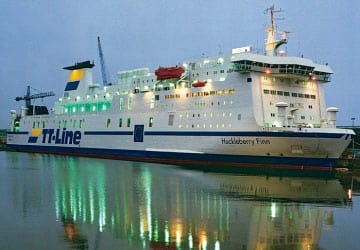
-
Recent Searches
Recent Searches
- Travel Alerts
- My Account
- Customer Service
-
United Kingdom
Klaipeda to Trelleborg Ferry
The Klaipeda Trelleborg ferry route connects Lithuania with Sweden. Currently there is just the 1 ferry company operating this ferry service, TT Line. The crossing operates up to 1 times each week with sailing durations from around 17 hours.
Klaipeda Trelleborg sailing durations and frequency may vary from season to season so we’d advise doing a live check to get the most up to date information.
Klaipeda Guide
Located at the mouth of the River Dane in Lithuania is the city of Klaipeda. It lies at the point where the river flows into the Baltic Sea and is the third largest city in Lithuania. Having at various points in its past been ruled by the Duchy of Prussia, the German Empire and the Soviet Socialist Republic, the city has a rich and varied past. This heritage makes the city an interesting place to visit with most attractions located in the city centre. Some of the city's older buildings have picturesque half-timbered construction, similar to that found in Germany, France, England, Denmark and southern Sweden.
The city's mainly ice-free port has an important role to play in Lithuania's transport network. It provides a connection to the country's land, sea and railway routes from east to west. The port caters for both passenger traffic and cargo, and has a number of stevedoring companies, ship repair and ship building yards. The port lies to the south west of the city and offers passenger ferry services to Kiel and Karlshamn.
Trelleborg Guide
Trelleborg is Sweden's southernmost town and can trace its history back to the 13th century when the town was presented as a wedding gift to the Swedish Prince Valdemar from the Danish Royal Family. The town was later reclaimed by the Danes who ruled it until 1658 when it passed back to Swedish rule. today, the town is often visited by people who are travelling between Sweden and Germany because of the ferries that depart from the town's port to Rostock, Sassnitz and Lubeck and Travemunde. These ferry routes began to operate in 1897 with the Sassnitz line and the route to Travemunde established in 1962 and the route to the former East German city of Rostock established after the fall of the Berlin Wall in 1989. The ferries that operate on these routes can carry both foot passengers and cars along with heavy trucks that are usually en route through Europe. In 1917, Lenin arrived by ferry from Sassnitz to Trelleborg on his way from exile back to Russia to lead the Revolution.


